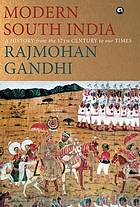A teacher teaches music – the curriculum, the techniques, the methods and so on, but a Guru teaches how to approach music: how to understand it, how to internalize it and how to enjoy it. […]
Music is a lifelong pursuit and its emotions start sinking into you with more internal growth of the self (for which the Guru is an enabler). At a certain phase in this pursuit, you become your own Guru.
Vasudevan Ram in Learning Music – A Guru Is More Than A Teacher >>
The word ‘Guru’ in the Indian context of learning places the person on par with or even higher than God.
Pantula Rama paying tribute to her violin guru Ivaturi Vijayeswara Rao of the Dwaram tradition in “Architect of Vizag’s music scenario” (The Hindu, 19 February 2013)
Note: gurukulavāsam refers to the practice of living as member of a teacher’s household >>
Carnatic music as experienced today: its social and political context in a nutshell

As the nineteenth century closes and in January 1901 a distant Empress dies, the onlooker recognizes an advance across South India in education, a growing print culture, and an emerging middle class of small landholders, doctors, lawyers, college teachers, writers, government employees and merchants.
In the realm of ideas, the onlooker discerns a few currents. One is of nationalism. Another is for reform in traditional customs and exclusions. A third is of linguistic pride. And a fourth pursues equality among castes.
Rajmohan Gandhi in Modern South India: A History from the 17th Century to Our Times , p. 236
This is a Dravidian story, and also more than that. t is a story involving four centuries, the seventeenth, eighteenth, nineteenth and twentieth, yet other periods intrude upon it… [cover notes]
Information about the persons, items or topics
Research & Custom search engines
The Oxford Illustrated Companion to South Indian Classical Music
Learn & practice more
A brief introduction to Carnatic music (with music examples and interactive map)
Bhava and Rasa explained by V. Premalatha
Free “flow” exercises on this website
Introduction (values in the light of modernity)
Video | Keeping tala with hand gestures: Adi (8 beats) & Misra chapu (7 beats)
Why Carnatic Music Matters More Than Ever
Worldcat.org book and journal search (including Open Access)